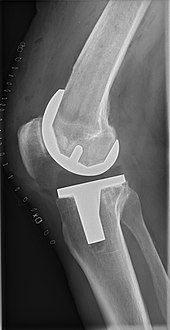Knee replacement surgery: robotic versus conventional, what’s best for patients?
 An investigation presented at the American Academy of Orthopaedic Surgeons meeting in February 2024, delivers a compelling narrative on the comparative outcomes of robotic-assisted knee replacement surgeries versus the conventional approach. As surgical malpractice attorneys entrenched in the intersection of medical innovation and patient outcomes, this study serves as a crucial touchstone for understanding the potential implications on patient care and legal practice.
An investigation presented at the American Academy of Orthopaedic Surgeons meeting in February 2024, delivers a compelling narrative on the comparative outcomes of robotic-assisted knee replacement surgeries versus the conventional approach. As surgical malpractice attorneys entrenched in the intersection of medical innovation and patient outcomes, this study serves as a crucial touchstone for understanding the potential implications on patient care and legal practice.
At the heart of the discussion is the study’s revelation: robotic assistance in cementless total knee replacement surgeries does not significantly decrease the likelihood of patients requiring revision surgery within two years when compared to manual methods. This conclusion draws attention not only for its clinical implications but also for its potential to reshape perceptions of medical negligence in the context of emerging surgical technologies.
The research analyzed 9,220 cementless total knee arthroplasty (TKA) procedures recorded in the American Joint Replacement Registry from January 2017 to March 2020. The finding that both robotic-assisted and manual knee replacements had similar rates of implant loosening and infection challenges the narrative that robotic assistance inherently enhances surgical precision and patient outcomes.
From a legal standpoint, this study underscores a vital concern: the adoption of advanced technologies in medical procedures without clear-cut evidence of improved patient outcomes. The enthusiasm for robotic surgery systems has been fueled by the promise of greater precision and quicker recovery times. Companies like Stryker, Zimmer Biomet, and Johnson & Johnson have heavily marketed their robotic systems, touting the benefits of their use in surgery. Yet, the study’s findings call into question whether these advantages translate into meaningful improvements in patient care.
Implications for Medical Malpractice
The implications of this study for medical malpractice litigation are multifaceted. Firstly, it highlights the importance of evidence-based practice in the adoption of new surgical technologies. The absence of a demonstrated advantage in using robotic assistance for knee replacements could challenge the standard of care in orthopedic surgery, potentially impacting what is considered acceptable medical practice.
Secondly, this research could influence the informed consent process. Patients must be made aware of the evidence (or lack thereof) supporting the benefits of robotic-assisted surgery. Failure to do so could result in litigation based because patients were not fully informed about the risks and benefits of their surgical options.
Finally, the study raises questions about the role of manufacturer claims in shaping medical practice. Legal professionals may scrutinize whether the promotion of robotic systems has outpaced the evidence supporting their use, potentially leading to cases where the deployment of such technology is questioned in the context of patient harm.
As the debate over robotic-assisted surgery continues, medical malpractice attorneys must stay abreast of the evolving landscape of surgical technology and its implications for patient care. This study serves as a critical reminder of the need for rigorous, evidence-based evaluation of new medical technologies before their widespread adoption. It also underscores the legal community’s role in advocating for transparency, accountability, and the highest standards of patient care in the use of such technologies.
 New York Personal Injury Attorneys Blog
New York Personal Injury Attorneys Blog


